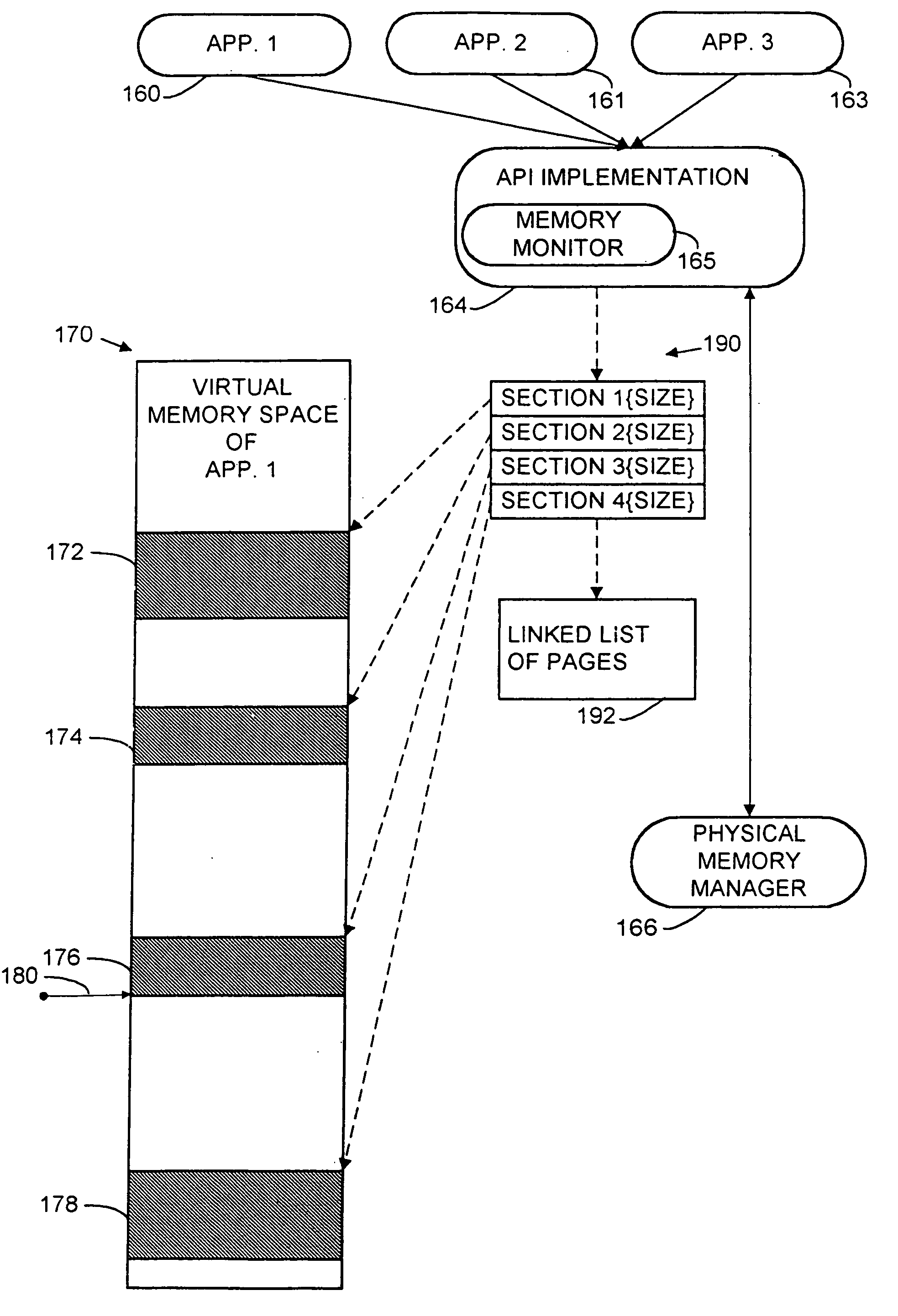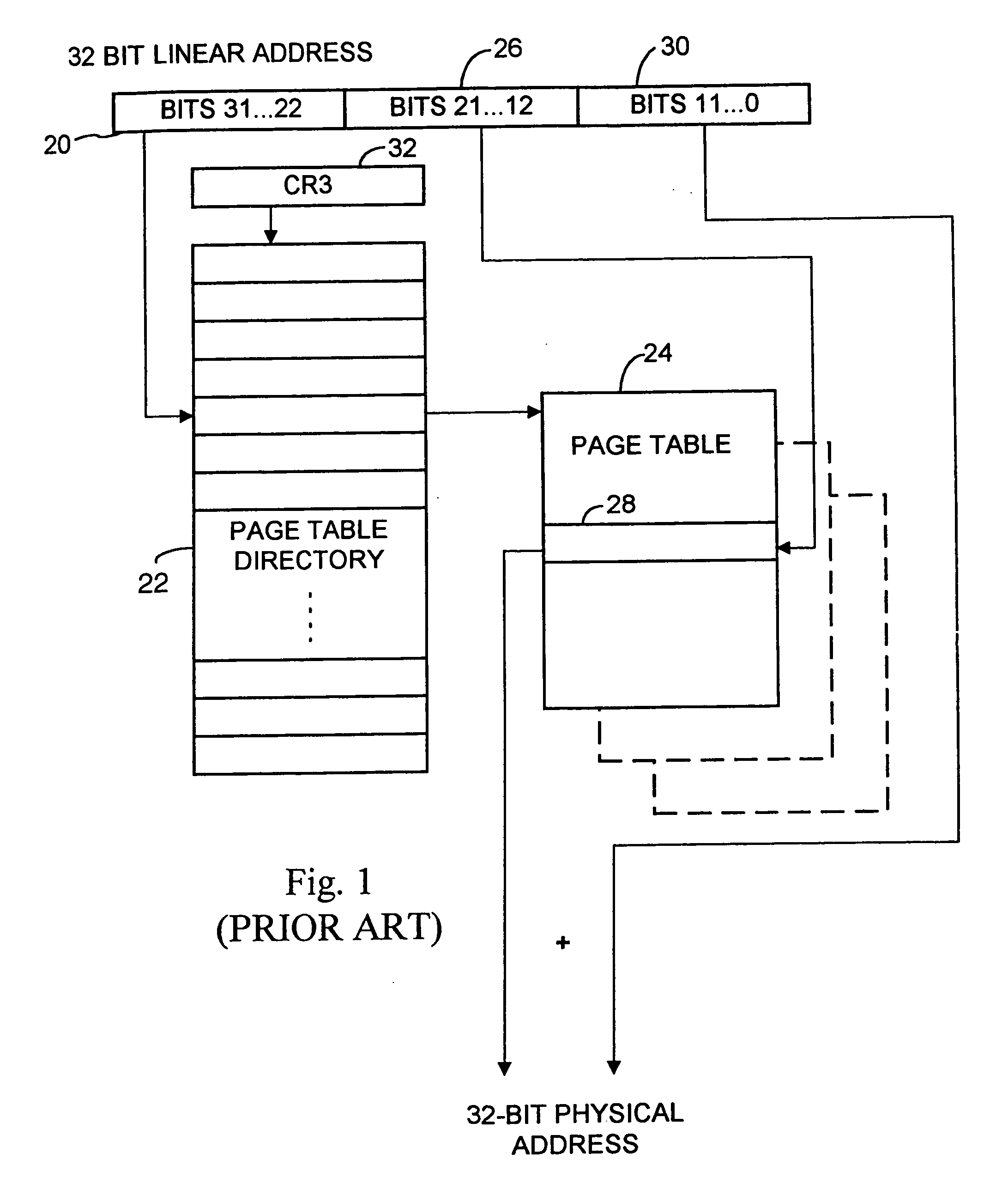Application programming interface enabling application programs to group code and data to control allocation of physical memory in a virtual memory system
a virtual memory system and application programming technology, applied in the direction of memory adressing/allocation/relocation, multi-programming arrangements, instruments, etc., can solve the problems of operating system not actually allocating physical memory to an application program, interrupts that the operating system must deal with, and insufficient physical memory to hold the code, etc., to prevent page faults and improve the performance of virtual memory systems
- Summary
- Abstract
- Description
- Claims
- Application Information
AI Technical Summary
Benefits of technology
Problems solved by technology
Method used
Image
Examples
Embodiment Construction
[0037] The invention is directed toward a virtual memory management system and method that enables application programs to control the allocation of physical memory in a virtual memory system. In one embodiment, the invention is incorporated in an application programming interface (API) entitled “DirectMemory” for the Windows® 95 Operating System, marketed by Microsoft Corporation of Redmond, Wash. Briefly described, the API provides a series of functions or API calls that allow applications to control how the operating system manages access to physical memory.
[0038]FIG. 3 and the following discussion are intended to provide a brief, general description of a suitable computing environment in which the invention may be implemented. While the invention will be described in the general context of computer-executable instructions of a computer program that runs on a personal computer, those skilled in the art will recognize that the invention also may be implemented in combination with...
PUM
 Login to View More
Login to View More Abstract
Description
Claims
Application Information
 Login to View More
Login to View More - R&D
- Intellectual Property
- Life Sciences
- Materials
- Tech Scout
- Unparalleled Data Quality
- Higher Quality Content
- 60% Fewer Hallucinations
Browse by: Latest US Patents, China's latest patents, Technical Efficacy Thesaurus, Application Domain, Technology Topic, Popular Technical Reports.
© 2025 PatSnap. All rights reserved.Legal|Privacy policy|Modern Slavery Act Transparency Statement|Sitemap|About US| Contact US: help@patsnap.com



